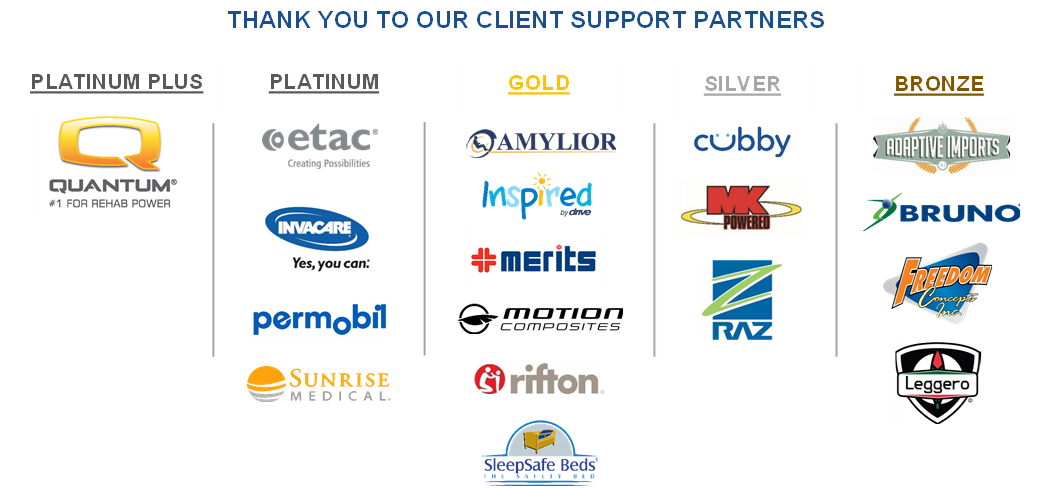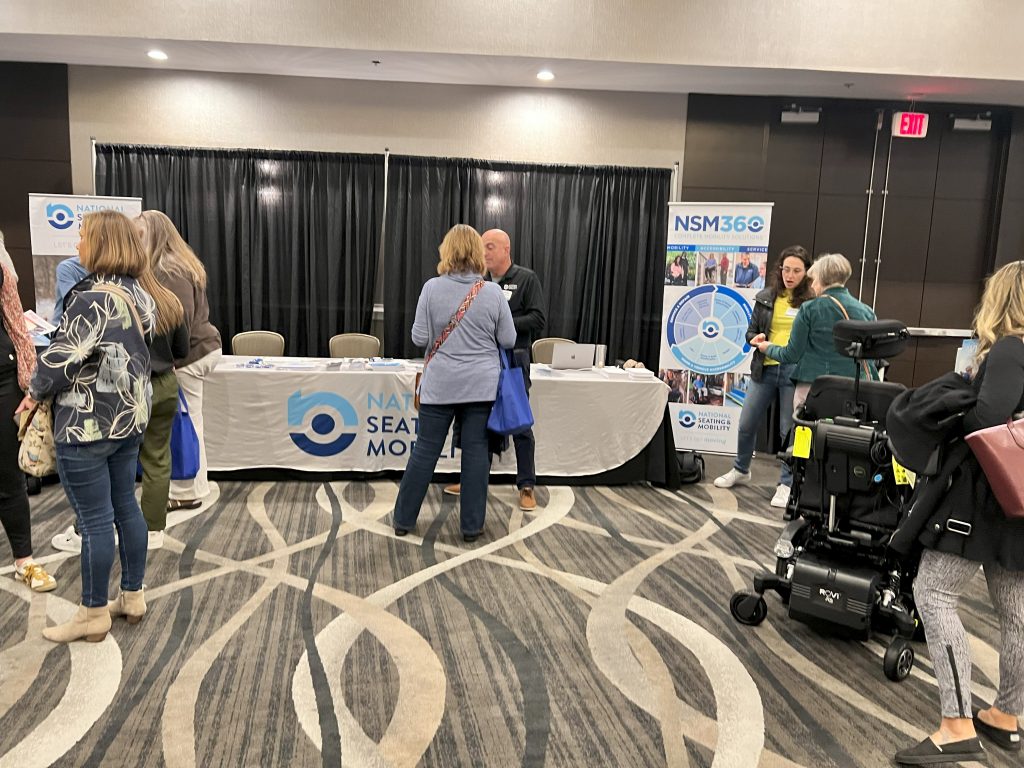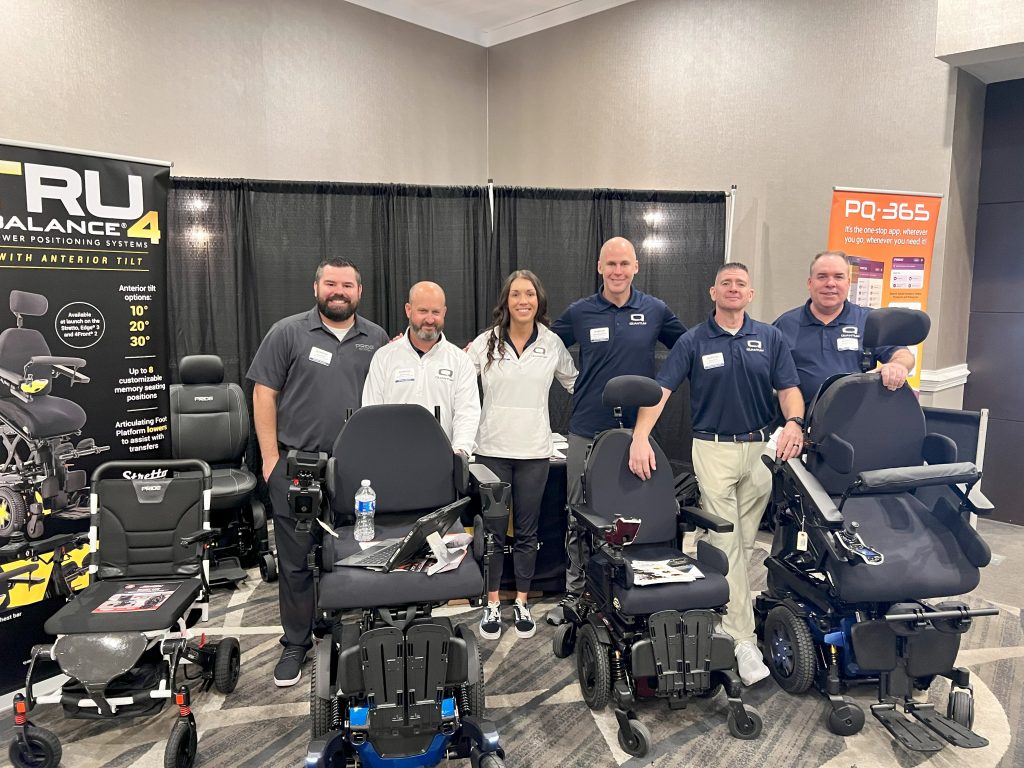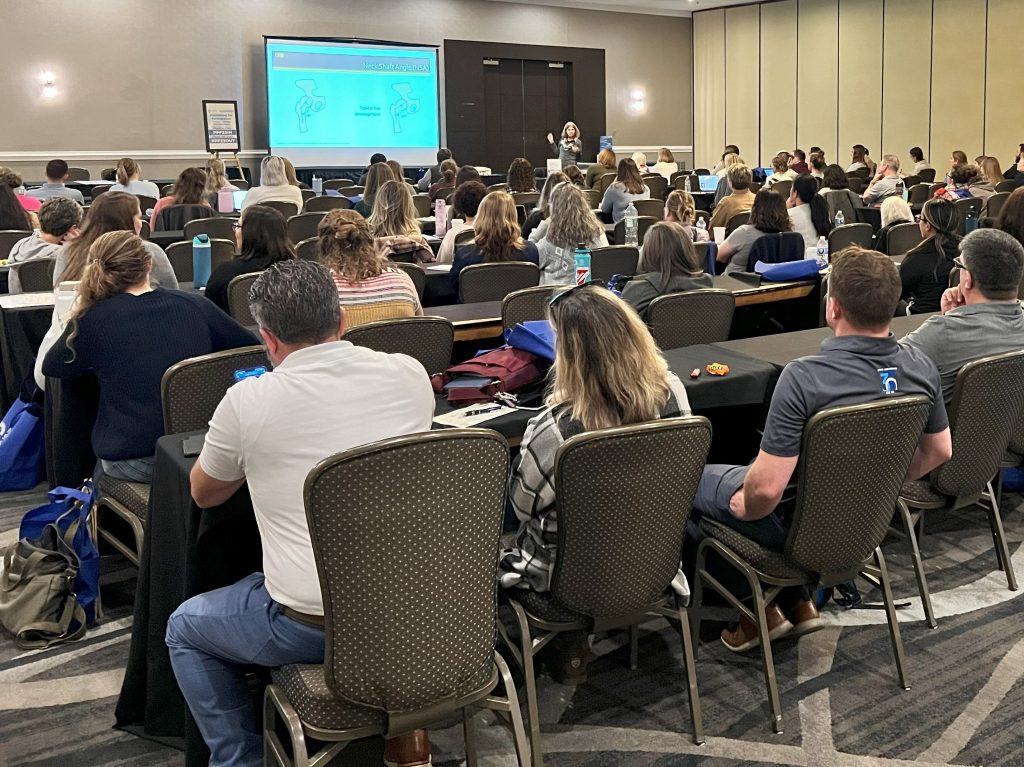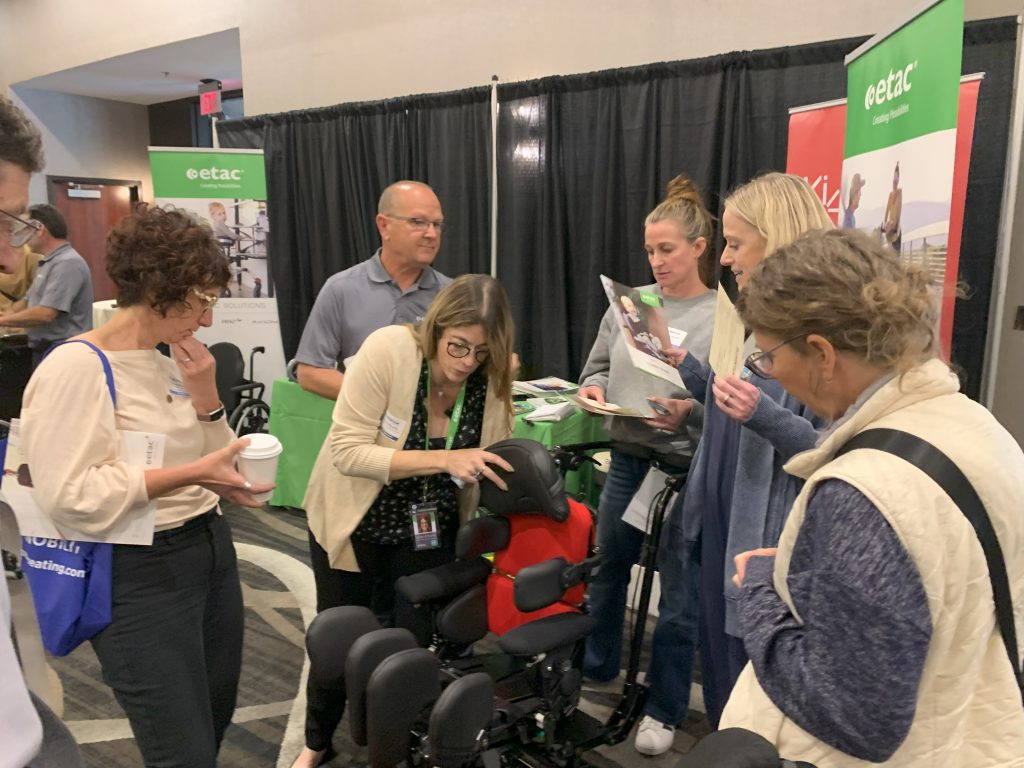PHILADELPHIA MOMENTUM ACADEMY EDUCATION & TECHNOLOGY EXPO
Wednesday, June 4, 2025
The Drexelbrook Event Center
4700 Drexelbrook Drive
Drexel Hill, PA 19026
Event Highlights
- Earn up to 6 hours of continuing education (CE) credits for PT, PTA, OT, COTA, ATP
- Network with industry professionals
- Exhibit hall with the latest assistive technology
- Breakfast and lunch provided
The rate is: $69 for up to 6 CE credits
SCHEDULE OF EVENTS
7:00am - 7:45am: Registration
7:45am - 8:00am: Kick-off
8:00am - 12:00pm: Education Courses
12:00pm - 1:00pm: Lunch
1:00pm - 5:00pm: Education Courses
The Supplier Exhibit Hall will be open throughout
the day with 2 hours of dedicated exhibit hall time.
Click here for full event schedule.
Continuing Education Courses
Advancing Child Development: The Role of Gait Trainers in Mobility
0.1 CEU / Intermediate
Presented by: Lindsey Veety, PT, DPT, ATP/SMS
Sunrise Medical
This one-hour course will be a recap of the typical gait development and its critical role in a child's brain and musculoskeletal growth. This course will delve into the numerous benefits of promoting early active mobility in children with additional needs, focusing on hip joint and muscle development. Participants will explore the evidence on gait trainers, evaluate the pros and cons of various styles, and learn about the innovative features and accessories of gait trainers. These tools can significantly enhance child exploration, interaction, and participation. Real-world case studies will illustrate the practical application of clinical theories using gait trainers.
Balancing Function and Independence: Clinical Considerations for Power Adjustable Seat Height and Anterior Tilt
0.1 CEU / Beginner
Presented by: TBD
Quantum Rehab
Power wheelchairs are designed to augment function when functional mobility is compromised or lost. However, this is not the only benefits that the power mobility systems can provide. There are critical components of this system that also facilitate or improve the end user’s ability to complete functional activities/ADLs, support their physical and mental health, provide independent repositioning for pressure relief, increase tolerance of the seated position, and increase the overall satisfaction of the equipment. These critical components are known as power positioning devices. While there are several different types of power positioning products on the market, this presentation will focus on the clinical benefits of power adjustable seat height and anterior tilt.
Using Tilt Bases for Pressure, Posture, Function, and Participation
0.1 CEU / Beginner to Intermediate
Presented by: Lindsey Veety, PT, DPT, ATP/SMS
Sunrise Medical
The seat to back angle or a posterior, anterior, or lateral tilt can be incorporated into a seating system to provide increased opportunities for pressure relief, postural support, function, and participation. What benefits does an increased or decreased seat to back angle provide? When should it be adjustable? What are the benefits of fixed seat to back angles? What about tilt? How and why are tilt incorporated into a rider’s day? This session provides an overview of how tilt and seat to back angle recommendations can be incorporated into a stroller, dependent, or manual tilt wheelchair system. Available evidence and rider experiences will be shared to illustrate interventions focusing on seat to back angle and tilt.
Dialing It In: Drive Wheel Configuration and the Impact on Programming Alternative Drive Controls
0.1 CEU / Intermediate to Advanced
Presented by: TBD
Quantum Rehab
Control of a power wheelchair with a proportional control vs an alternative switched control is very different and should be treated as such. To make things more challenging adding in different drive wheel configurations and personal preference complicates it further. This course will review drive wheel configuration and programming parameters and how to integrate both together to optimize the consumer’s experience. To drive this point home there will be a driving experience for a limited number of participants to conclude the class.
Providing Safe Environments with Adaptive Positioning Equipment
0.1 CEU / Beginner
Presented by: Melissa Tally, PT, MPT, ATP
Adaptive Imports
There are several misconceptions and unknown facts around adaptive positioning equipment for patients with neurodiverse diagnoses. This course will present current evidence-based practice and standards of care supporting positioning equipment to provide improved access, function, and safety in all environments. There are four main areas in which adaptive equipment is most often needed: including home or school, transport, mobility, and communication. We will discuss the medically necessary clinical presentation justifying these supports and the process of planning, assessing, and obtaining the appropriate equipment for each client. The acquisition of this adaptive equipment, when needed, can greatly impact the safety, function, and quality of life of the client and their family.
Beyond the Base: The Seating Professionals Responsibility of Educating on Manual Wheelchair Components
0.1 CEU / Intermediate
Presented by: Christie Hamstra, PT, DPT, ATP
Motion Composites
When configuring an ultralight manual wheelchair, significant time and consideration is spent on the base. Accessories are necessities of the seating system to complete the configuration. As professionals, we must educate clients and caregivers on the advantages and disadvantages of each selected component, creating an understanding of how components contribute to overall function and satisfaction.
Pediatric Adaptive Standing: Five Considerations for Optimizing the Outcomes
0.1 CEU / Intermediate
Presented by: Phil Blough, DPT
Rifton
This 60-minute presentation will address five novel and up-to-date considerations for pediatric adaptive standing. Specifically: standing as physical activity, positioning for postural control, hip abduction positioning and contracture management, active participation in the sit-to-stand transfer, and creating opportunities for social engagement and participation in standing. Current evidence supporting these interventions will be presented along with case examples to illustrate applications of these concepts. A segment for Q&A will conclude the session.
Ahead of the Curve: Rethinking Plus Sized Seating and Mobility
0.1 CEU / All Levels
Presented by: Stephanie Tanguay OT/L, ATP
Invacare/Motion Concepts
Obesity has become common as a pre-existing condition during the last forty years, especially in North America. Rehabilitation professionals worldwide are challenged to maximize function mobility and all aspects of daily activity for consumers who have obesity as a secondary diagnosis. Finding appropriate equipment to meet the requirements of bariatric clients can be challenging, and the funding parameters for qualification and reimbursement can complicate this even more. Five years ago, there were more commercially manufactured bariatric cushions, back supports, manual and powered mobility devices available than ever before; not so today. Now more than ever, it is imperative that prescribers and providers properly measure the bariatric client and configure the equipment with understanding of weight distribution on base stability and seated orientation.
This session will examine the impact of redundant tissue and weight distribution on seated posture and wheeled mobility stability and performance. Measurement and accommodation of excessive tissue as it relates to the configuration of seat and back support surfaces and mobility devices will be discussed. Case studies including consumers with a variety of diagnosis and complex tissue distributions will be presented to illustrate challenges and contribute to problem solving.
Custom-Configured Seating - Designing Seating & Mobility for Growing Bodies
0.1 CEU / Intermediate
Presented by: Bill Randall, MSc, Kin
Etac/Ki Mobility
Custom-configured seating may be perceived by some as a challenging puzzle. With all the possible configurations and myriad shapes, components, and materials to select from or define, how does one determine what to do? Understanding the clinical decision-making as well as the purposes and capabilities of this seating technology can profoundly influence successful outcomes. It can be a challenge to get it right, but it is called complex rehab, after all.
In this presentation, we will briefly review the relevant components of a postural assessment. We will then discuss how to translate the findings from that assessment to specify and design the custom-configured seating system and accurately work our way through and complete the order form. Considerations will include providing an understanding of the variety of custom modifications, planning for growth or other changes, and ensuring an appropriate integration with a mobility base.
Understanding Insurance Denials and Steps for More Effective Medical Justification
0.1 CEU / Intermediate
Presented by: Diane Racicot & Tami Perez
NSM
This one-hour CEU course will provide an overview of the most common health insurance denial reasons. This course will inform participants on the different types of insurance denials and outline the common missing objective information that payers require in medical documentation. Learners will leave this course equipped with best practices for how to inform clinician and medical providers of payer documentation requirements in a clinical setting and provide critical knowledge for overcoming challenges and delays for our clients in doing so.
Pediatric Wheelchair Cushions and Backs - Matching Technology and Needs
0.1 CEU / Intermediate
Presented by: Bill Randall, MSc, Kin
Etac/Ki Mobility
For many years, there were only a couple basic choices of primary supports for pediatric wheelchair users: custom configured or custom molded. The available options for primary supports, backrests and cushions, for the pediatric client have expanded considerably over the years, and today there are a number of off-the-shelf, out-of-the-package products available. This greater range of available products requires professionals to be more discerning regarding the variety of choices before them, and recognize which product accomplishes the objective in a clinically appropriate way. We know that children are not just a smaller version of the adult client and that their needs can be different. What does the research say about what is important for the pediatric client regarding providing postural support, addressing postural asymmetries, maintaining tissue integrity, facilitating function, etc. This presentation will explore the types of primary supports on the market, and seek to inform clinical practice by discussing considerations and applications of the various types of technology for primary supports for the pediatric wheelchair user.
Tailored Seating Solutions for High-Risk Clients
0.1 CEU / Beginner
Presented by: Eleni Lema, MOT, OTR/L, ATP/SMS
Permobil
In the wheelchair seating arena, providing a seating system for the clients at high risk for pressure injury can be both intimidating and overwhelming. This 1-hr course provides an in-depth understanding of how to incorporate evaluation findings, seating characteristics, and client goals when formulating equipment recommendations for high-risk clients. Participants will learn to identify clinical indicators of pressure injury risk, apply ISO wheelchair cushion performance standards, and recognize key material traits in seating products. A complex case example will be discussed to illustrate the process of integrating evidence and client goals to enhance functional independence.
By the end of this course, participants will be equipped with the knowledge to make informed, evidence-based, and client-centered seating recommendations, ultimately improving the quality of life for wheelchair users.
Explore the course offerings. You can pick & choose the classes you'd like to attend during registration.
